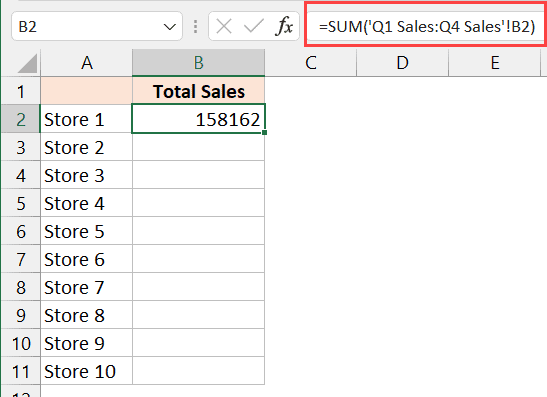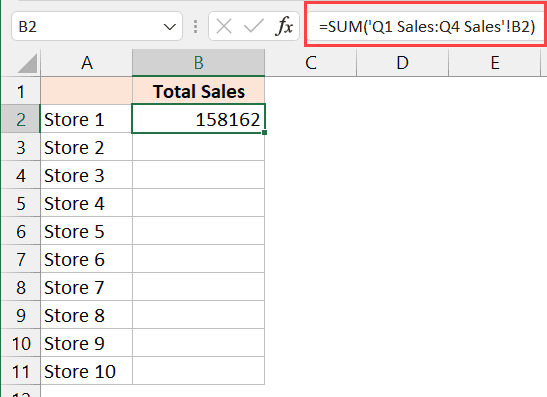Master Excel: Calculate Totals Across Multiple Sheets

Exploring Excel's Power: Calculating Totals Across Multiple Sheets

Mastering Excel extends far beyond basic functions and formulas; it's about utilizing the program's full potential to manage and analyze complex data sets. One of the most sought-after skills in Excel is the ability to calculate totals across multiple sheets. This article will guide you through the different methods to achieve this, ensuring that your Excel skills are not only comprehensive but also efficient.
Understanding Multi-Sheet Data Management

When dealing with extensive data, it's common to organize it across several worksheets within an Excel workbook. Here are some reasons why you might spread data over multiple sheets:
- Organizational Clarity: Each sheet can represent different segments of your data, such as departments, time periods, or product lines.
- Data Volume: Large datasets can be more manageable when split into smaller, more focused worksheets.
- Collaboration: Different team members might be responsible for updating specific sheets, making collaborative work more streamlined.
🚨 Note: Remember, while it's efficient to work with multiple sheets, always ensure data consistency across these sheets to avoid calculation errors.
Methods for Summing Data Across Sheets

Method 1: Using 3D References

The 3D reference feature in Excel allows you to sum values from the same cell across multiple sheets. Here's how:
- In the cell where you want the total to appear, type
=SUM(. - Select the first sheet, click on the cell you want to reference, and while holding the Shift key, click on the last sheet to include all sheets in between.
- End by entering the cell reference you want to sum (e.g.,
=SUM(Sheet1:Sheet5!B2)).
3D references are powerful for consolidating data from similar structures across sheets but remember:
- Sheet names must be consecutive.
- The cell references must be consistent across all sheets.
📍 Note: If you insert or remove sheets within the range specified in a 3D reference, the formula will automatically adjust.
Method 2: Consolidating Data with SUMIF

When your data spans multiple sheets but not necessarily in the same cell, use the SUMIF function:
- On a summary sheet, use the formula:
=SUMIF(Sheet1:Sheet5!A1:A100, "Criteria", Sheet1:Sheet5!B1:B100).
This method sums values based on specific criteria:
- The first range specifies the cells to check for the criteria.
- The criteria can be a string, number, or expression.
- The second range specifies the cells to sum if the condition is met.
🔍 Note: Ensure your criteria match the data across sheets to avoid summation errors.
Method 3: Using VBA for Dynamic Summing

For complex or dynamic data sets, consider using VBA (Visual Basic for Applications) to automate the summation process:
Sub SumAcrossSheets()
Dim ws As Worksheet
Dim totalSum As Long
totalSum = 0
For Each ws In ThisWorkbook.Worksheets
If ws.Name <> "Summary" Then
totalSum = totalSum + ws.Range("B2").Value
End If
Next ws
ThisWorkbook.Worksheets("Summary").Range("B2").Value = totalSum
End Sub
The above VBA code:
- Iterates through all worksheets except the one named "Summary."
- Adds up values in cell B2 of each sheet.
- Writes the total to the Summary sheet.
💡 Note: While VBA offers flexibility, it requires enabling macros, which can pose security risks if the file is shared.
Practical Considerations and Tips

When working with data across multiple sheets:
- Sheet Naming: Use clear, logical sheet names to facilitate navigation and referencing.
- Backup Data: Before complex operations, save a copy of your workbook.
- Data Validation: Ensure data consistency across sheets to avoid calculation errors.
📁 Note: Backing up your data is crucial when performing complex calculations that might change the workbook structure.
Summary of Excel's Versatility

By now, you've learned several ways to calculate totals across multiple sheets in Excel, including using 3D references, the SUMIF function, and VBA scripts. Each method has its strengths, from the simplicity and automation of 3D references to the flexibility of VBA for more dynamic data structures. As you implement these techniques, you'll find Excel's capabilities expanding, allowing you to manage and analyze your data with greater efficiency and insight.
Can I sum across non-consecutive sheets?

+
Yes, you can sum values across non-consecutive sheets using the SUMIF function or by listing each sheet individually in your formula. However, this approach requires more manual setup and can be prone to errors if sheets are added or removed.
What happens if I add or remove sheets in a 3D reference?

+
If you insert sheets within the range of a 3D reference, the formula will automatically include them. If you remove sheets, the reference will adjust to exclude them, potentially leading to incorrect totals if not carefully managed.
How secure is it to use VBA?

+
VBA can pose security risks, especially if macros are enabled when opening files from unknown sources. Always ensure your source is trustworthy, and consider using digital signatures or macro security settings to safeguard your data.



